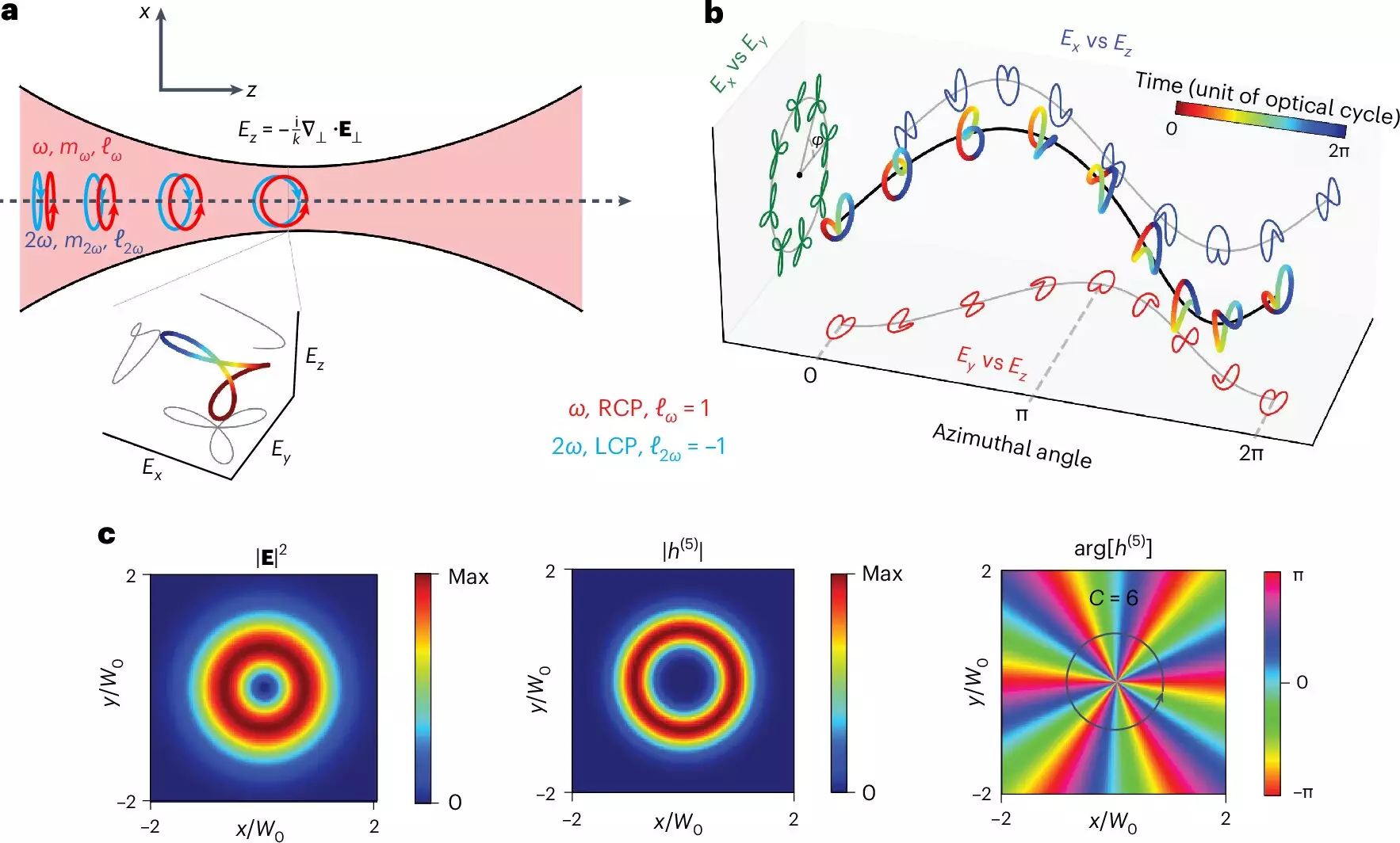Chirality is a fundamental aspect of molecular chemistry that refers to the geometric property of a structure being non-superimposable on its mirror image. This phenomenon is vital in a multitude of scientific fields, particularly in pharmacology. The distinction between right-handed and left-handed molecules can significantly affect how substances interact with biological systems. An infamous historical example occurs with thalidomide, a drug that caused severe birth defects in the 1950s due to its two enantiomers—only one of which is safe for use. Consequently, accurately measuring and understanding chirality is essential for the development of safe and effective medications. Recent advancements in optical technology have introduced a novel approach to measuring chirality in molecules, promising to address the challenges that have historically plagued this critical area of research.
A groundbreaking study conducted by researchers from King’s College London and the Max Born Institute has introduced an innovative structure of light known as the “chiral vortex.” Published in Nature Photonics, this approach involves a new method of tracking chirality that surpasses traditional techniques in precision and reliability. The authors have developed a light structure where the electric field traces out a chiral curve that evolves over time. This dynamic characteristic generates a vortex, which interacts with chiral molecules in a manner that enhances measurement accuracy.
The significance of the chiral vortex is its ability to improve measurements at what might have previously been negligible levels of chirality. Traditional methods often struggle when the concentration of right-handed and left-handed molecules is nearly equal, causing challenges in identifying even slight imbalances. The chiral vortex, however, can effectively detect these minor discrepancies, making it possible to discern concentrations as close as 49% right-handed and 51% left-handed, a feat that can lead to critically important insights in drug development.
When chiral molecules encounter the chiral vortex, they engage in a process known as high-harmonic generation, resulting in the emission of photons that exhibit a recognizable pattern. This pattern is indicative of the handedness of the molecules being observed. An innovative feature of this method is that when the handedness of the molecules is altered, the corresponding photon emission pattern undergoes spatial rotation. This attribute offers a more precise detection mechanism than standard procedures, which often rely on weak signals produced by simple magnetic fields.
The robustness of the chiral vortex against common experimental variabilities—such as fluctuations in the intensity of the light—represents a game-changing advancement for laboratory practices. This enhanced performance could democratize access to chirality measurements, allowing more researchers to explore and implement this technique without the need for highly controlled conditions. As a result, the chiral vortex could stimulate a wider array of studies and applications, ranging from basic chemical research to practical pharmaceutical innovations.
The pharmaceutical industry stands to benefit immensely from the advancements provided by the chiral vortex technology. By providing more accurate chirality measurements, this method allows drug developers to detect potentially harmful molecular forms before they reach the market. Aside from improving drug safety, it could also streamline the development of new drugs by enabling a more efficient identification process for chiral compounds. This could be particularly beneficial for complex molecules, where chirality plays a significant role in therapeutic effectiveness.
Additionally, beyond the realms of pharmacology, the chiral vortex might lay the groundwork for advancements in quantum computing. Researchers speculate that the ability to manipulate the chirality of quantum bits could potentially enhance their robustness and capacity for information storage. Imprinting left- or right-handedness onto quantum bits could develop into a novel method for encoding data, resembling a sophisticated form of binary code that increases processing power.
The development of the chiral vortex represents a significant leap forward in the measurement of molecular chirality. By offering unprecedented sensitivity and reliability, this innovative technique paves the way for improved safety protocols in drug development while also holding potential implications for other scientific fields, including quantum computing. As researchers continue to explore the multifaceted applications of this discovery, the chiral vortex may well change the landscape of how we understand and utilize chirality in chemistry and beyond, ultimately benefitting both scientific progress and public health.

